Quantum Physics
Quantum physics, also known as quantum mechanics or quantum field theory, looks at the physics and nature of atoms and subatomic particles at the smallest scales. The word quantum refers to the smallest discrete amount of energy or matter that can be measured.
Quantum physics was born in 1900 when Max Planck published a paper on blackbody radiation. Quantum theory was developed in the following decades by many renowned scientists including Werner Heisenberg, Erwin Schrodinger, Max Planck, Albert Einstein, and Niels Bohr.
EVERYTHING IS WAVES AND PARTICLES
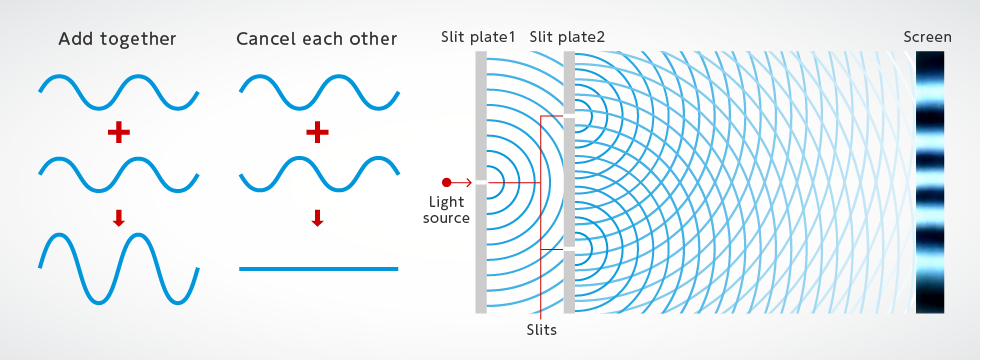
Everything in the universe has particle and wave nature at the same time. The objects described by quantum physics are neither particles nor waves. They share some properties of particles such as being countable and localized to some degree. Also they share some properties of waves such as frequency, wavelength, and a spread over space.
Light can sometimes behave as a particle. Light also behaves as a wave like ripples on the surface of a calm lake. Light bounces off walls and bends around corners and the crests and troughs of light waves can add up or cancel out. Added wave crests result in brighter light while waves that cancel out produce darkness.
All things are waves with nothing waving over no distance at all. Deep down, everything in the universe has wave nature. All matter has wave-particle duality.
QUANTUM PHYSICS AFFECTS THE VERY SMALL
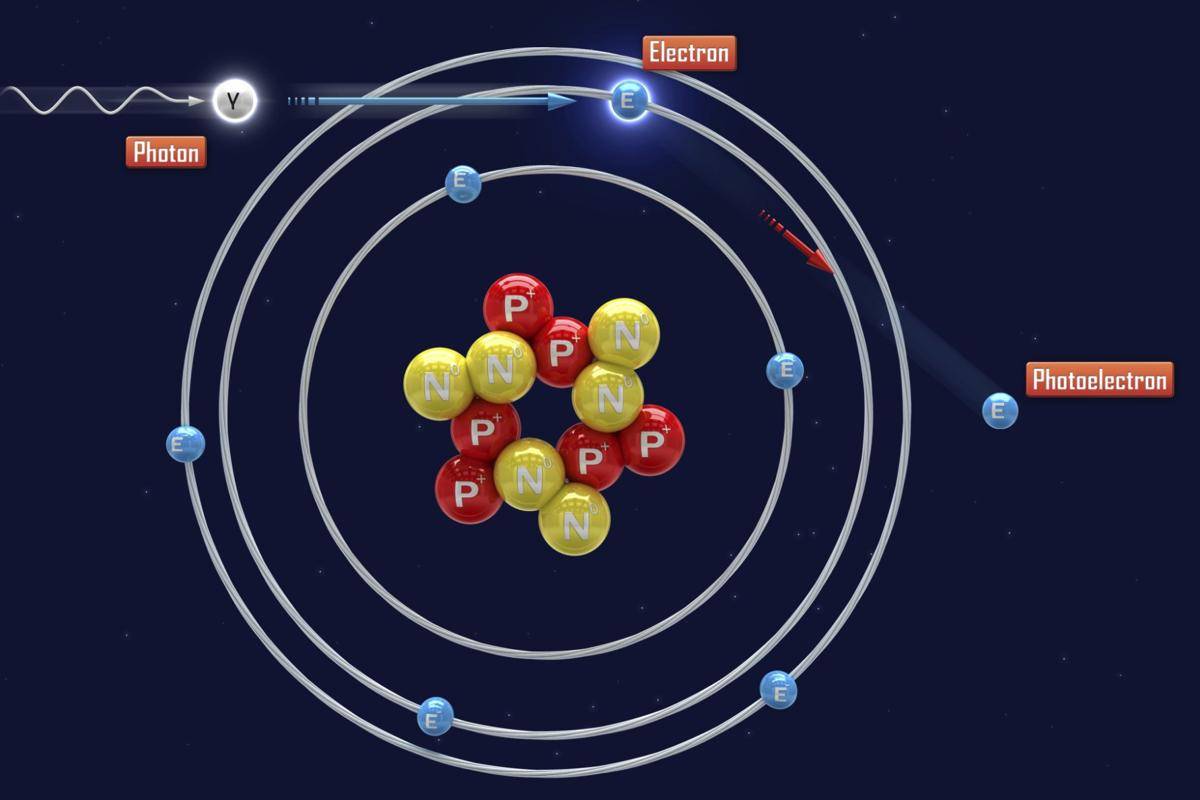
The effects involved get smaller as the objects get larger. The wavelength decreases as the momentum increases.
Nearly all quantum phenomena are confined to the scale of atoms and fundamental particles. This is where the masses and velocities are small enough for the wavelengths to get big enough to observe directly.
If everything was expanded so that an atom in the room is the size of the entire Solar System, the wavelength of a person walking would be about the size of a single atom within the solar system.
QUANTUM PHYSICS IS DISCRETE
Some quantum properties, such as position, spin, and colour only occur in specific set amounts. This is like a dial that clicks from number to number rather than the smooth continuous spectrum expected in classical physics.
High-frequency, short-wavelength light has a large energy. Low-frequency, long-wavelength light has a small energy. The total energy contained in a particular light field is an integer multiple of that energy such as 1, 3 or 8. It is never a fraction like 3/2, π, or the square root of two.
Quantisation is also seen in the discrete energy levels of atoms where some values of energy are allowed but other values are not.
QUANTUM PHYSICS USES PROBABILITY
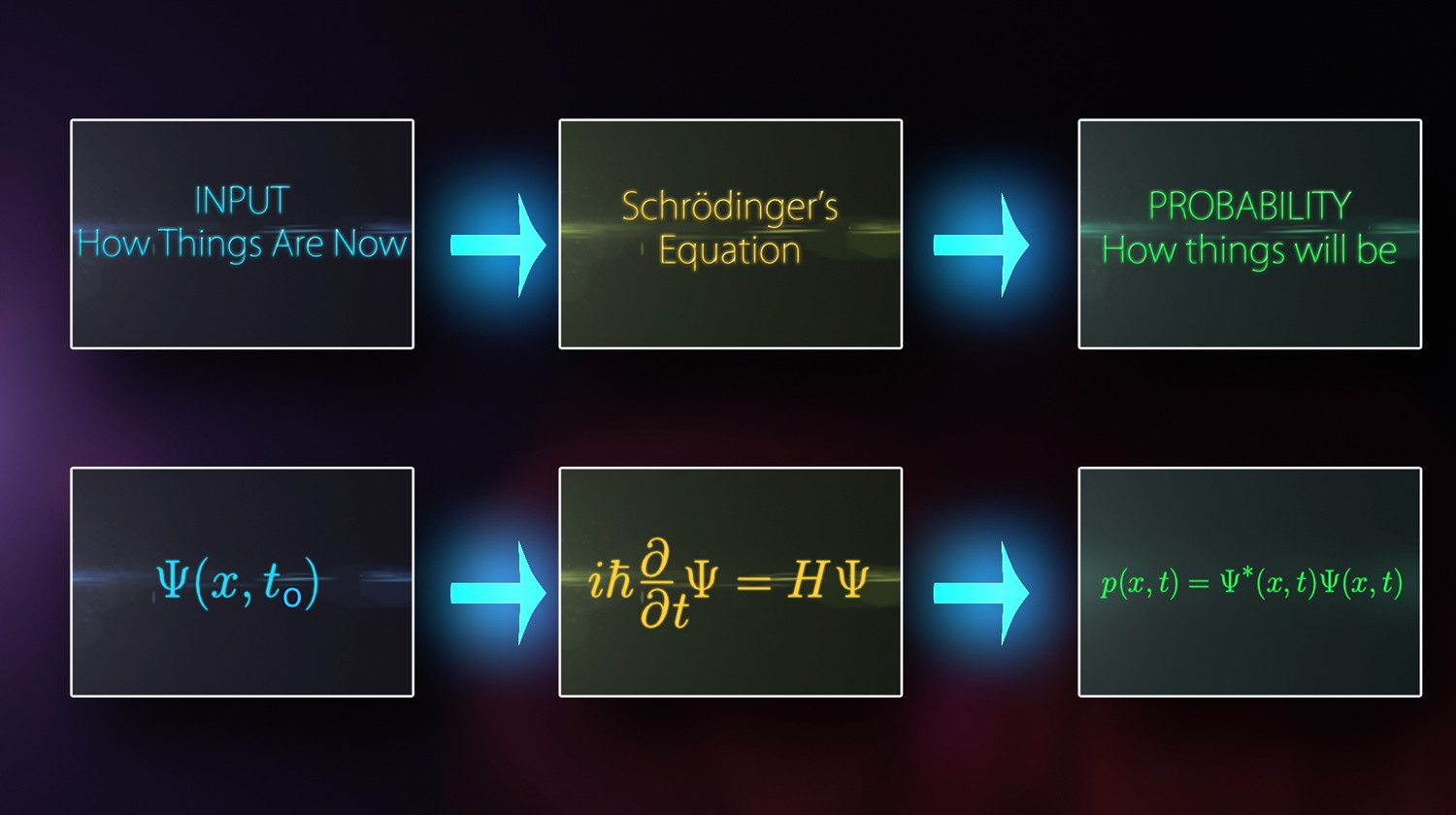
In quantum physics a prediction is made based on the probability of finding each of the possible outcomes. Physicists make comparisons between theory and repeated experiments. This builds up a detailed picture of the probability distributions.
A quantum system is represented by a wavefunction. Due to the complex mathematics involved, the probability of finding an outcome is not given directly by the wavefunction. Instead it is given by the square of the wavefunction.
Before a measurement is made the system being measured is in an indeterminate state. This state mathematically maps to a superposition of all possibilities with different probabilities.
QUANTUM ENTANGLEMENT AND NONLOCALITY
Quantum entanglement suggests that two objects created together are “entangled.” If you do something to one of them then the other will act in the same manner instantaneously even if one particle is at the other end of the universe. This is ‘spooky action from a distance’.
Nonlocality is a result of quantum entanglement. Entanglement is where particles become dependent on each other’s states and properties. They lose their individuality and in many ways behave as a single entity. Measuring the quantum state of one particle also places constraints on the measurements of the other particles.
Quantum nonlocality does not allow for faster-than-light communication so it is compatible with special relativity. However information can move instantly across vast distances by entanglement.
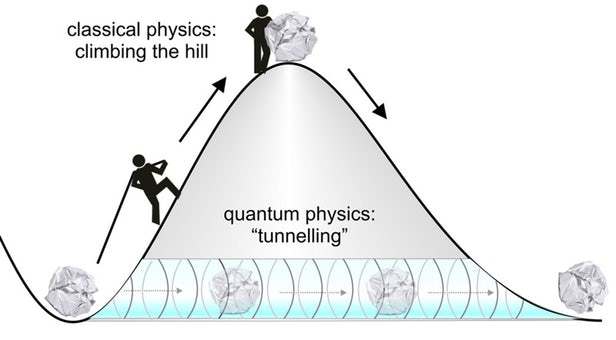
ROLE OF THE OBSERVER
Quantum physics indicates that consciousness must exist and that it creates reality at all levels. Scientists are now starting to comprehend the world as a form of mind, a living breathing organism. This is a world where the observer influences reality in subtle ways.
Everything we observe appears real and solid because the wave-function for our reality has already collapsed. Observation and collective observation at the macroscopic level ensures a consistency in the reality around us.
Any observation we make takes in the information from our environment. This is observed all the time by Mother Nature and appears real and solid to us. Also trees still fall if there is no observer and the moon is still in the sky if no one sees it.
EXPERIMENTS AND APPLICATIONS
There are many experiments that prove quantum physics. These include the double-slit experiment, the quantum eraser experiment, quantum entanglement experiments, quantum teleportation and the Schrodinger Cat thought experiment.
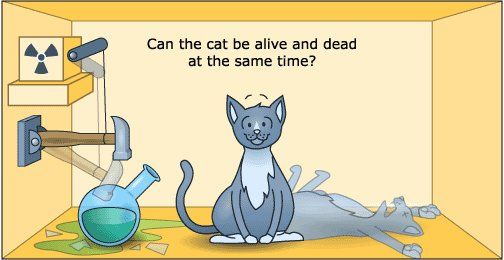
Many of our current technologies depend upon quantum physics to work. Important applications of quantum physics include quantum optics, quantum computing, superconducting magnets, light-emitting diodes, lasers, the microprocessor, medical and research imaging including electron microscopy and magnetic resonance imaging.
To experience at first hand the quantum field and its healing potential please visit the Star Magic Meditation Library.
Healing For Horses Enquiry Form
"*" indicates required fields
Sign up for our weekly newsletter, for inspiration and fresh content from Jerry Sargeant.
Event Enquiry Form
"*" indicates required fields
Sign up for our weekly newsletter, for inspiration and fresh content from Jerry Sargeant.
[mc4wp_form id=”168″]
Download Prospectus Form
[contact-form-7 id=”50219″ title=”Download Propesctus Form”]
Download Prospectus Form
[contact-form-7 id=”50219″ title=”Download Propesctus Form”]
Star Magic
Accessibility Statement
- sminfozzle.testingweblink.com
- December 14, 2025
Compliance status
We firmly believe that the internet should be available and accessible to anyone, and are committed to providing a website that is accessible to the widest possible audience, regardless of circumstance and ability.
To fulfill this, we aim to adhere as strictly as possible to the World Wide Web Consortium’s (W3C) Web Content Accessibility Guidelines 2.1 (WCAG 2.1) at the AA level. These guidelines explain how to make web content accessible to people with a wide array of disabilities. Complying with those guidelines helps us ensure that the website is accessible to all people: blind people, people with motor impairments, visual impairment, cognitive disabilities, and more.
This website utilizes various technologies that are meant to make it as accessible as possible at all times. We utilize an accessibility interface that allows persons with specific disabilities to adjust the website’s UI (user interface) and design it to their personal needs.
Additionally, the website utilizes an AI-based application that runs in the background and optimizes its accessibility level constantly. This application remediates the website’s HTML, adapts Its functionality and behavior for screen-readers used by the blind users, and for keyboard functions used by individuals with motor impairments.
If you’ve found a malfunction or have ideas for improvement, we’ll be happy to hear from you. You can reach out to the website’s operators by using the following email
Screen-reader and keyboard navigation
Our website implements the ARIA attributes (Accessible Rich Internet Applications) technique, alongside various different behavioral changes, to ensure blind users visiting with screen-readers are able to read, comprehend, and enjoy the website’s functions. As soon as a user with a screen-reader enters your site, they immediately receive a prompt to enter the Screen-Reader Profile so they can browse and operate your site effectively. Here’s how our website covers some of the most important screen-reader requirements, alongside console screenshots of code examples:
-
Screen-reader optimization: we run a background process that learns the website’s components from top to bottom, to ensure ongoing compliance even when updating the website. In this process, we provide screen-readers with meaningful data using the ARIA set of attributes. For example, we provide accurate form labels; descriptions for actionable icons (social media icons, search icons, cart icons, etc.); validation guidance for form inputs; element roles such as buttons, menus, modal dialogues (popups), and others. Additionally, the background process scans all the website’s images and provides an accurate and meaningful image-object-recognition-based description as an ALT (alternate text) tag for images that are not described. It will also extract texts that are embedded within the image, using an OCR (optical character recognition) technology. To turn on screen-reader adjustments at any time, users need only to press the Alt+1 keyboard combination. Screen-reader users also get automatic announcements to turn the Screen-reader mode on as soon as they enter the website.
These adjustments are compatible with all popular screen readers, including JAWS and NVDA.
-
Keyboard navigation optimization: The background process also adjusts the website’s HTML, and adds various behaviors using JavaScript code to make the website operable by the keyboard. This includes the ability to navigate the website using the Tab and Shift+Tab keys, operate dropdowns with the arrow keys, close them with Esc, trigger buttons and links using the Enter key, navigate between radio and checkbox elements using the arrow keys, and fill them in with the Spacebar or Enter key.Additionally, keyboard users will find quick-navigation and content-skip menus, available at any time by clicking Alt+1, or as the first elements of the site while navigating with the keyboard. The background process also handles triggered popups by moving the keyboard focus towards them as soon as they appear, and not allow the focus drift outside it.
Users can also use shortcuts such as “M” (menus), “H” (headings), “F” (forms), “B” (buttons), and “G” (graphics) to jump to specific elements.
Disability profiles supported in our website
- Epilepsy Safe Mode: this profile enables people with epilepsy to use the website safely by eliminating the risk of seizures that result from flashing or blinking animations and risky color combinations.
- Visually Impaired Mode: this mode adjusts the website for the convenience of users with visual impairments such as Degrading Eyesight, Tunnel Vision, Cataract, Glaucoma, and others.
- Cognitive Disability Mode: this mode provides different assistive options to help users with cognitive impairments such as Dyslexia, Autism, CVA, and others, to focus on the essential elements of the website more easily.
- ADHD Friendly Mode: this mode helps users with ADHD and Neurodevelopmental disorders to read, browse, and focus on the main website elements more easily while significantly reducing distractions.
- Blindness Mode: this mode configures the website to be compatible with screen-readers such as JAWS, NVDA, VoiceOver, and TalkBack. A screen-reader is software for blind users that is installed on a computer and smartphone, and websites must be compatible with it.
- Keyboard Navigation Profile (Motor-Impaired): this profile enables motor-impaired persons to operate the website using the keyboard Tab, Shift+Tab, and the Enter keys. Users can also use shortcuts such as “M” (menus), “H” (headings), “F” (forms), “B” (buttons), and “G” (graphics) to jump to specific elements.
Additional UI, design, and readability adjustments
- Font adjustments – users, can increase and decrease its size, change its family (type), adjust the spacing, alignment, line height, and more.
- Color adjustments – users can select various color contrast profiles such as light, dark, inverted, and monochrome. Additionally, users can swap color schemes of titles, texts, and backgrounds, with over seven different coloring options.
- Animations – person with epilepsy can stop all running animations with the click of a button. Animations controlled by the interface include videos, GIFs, and CSS flashing transitions.
- Content highlighting – users can choose to emphasize important elements such as links and titles. They can also choose to highlight focused or hovered elements only.
- Audio muting – users with hearing devices may experience headaches or other issues due to automatic audio playing. This option lets users mute the entire website instantly.
- Cognitive disorders – we utilize a search engine that is linked to Wikipedia and Wiktionary, allowing people with cognitive disorders to decipher meanings of phrases, initials, slang, and others.
- Additional functions – we provide users the option to change cursor color and size, use a printing mode, enable a virtual keyboard, and many other functions.
Browser and assistive technology compatibility
We aim to support the widest array of browsers and assistive technologies as possible, so our users can choose the best fitting tools for them, with as few limitations as possible. Therefore, we have worked very hard to be able to support all major systems that comprise over 95% of the user market share including Google Chrome, Mozilla Firefox, Apple Safari, Opera and Microsoft Edge, JAWS and NVDA (screen readers).
Notes, comments, and feedback
Despite our very best efforts to allow anybody to adjust the website to their needs. There may still be pages or sections that are not fully accessible, are in the process of becoming accessible, or are lacking an adequate technological solution to make them accessible. Still, we are continually improving our accessibility, adding, updating and improving its options and features, and developing and adopting new technologies. All this is meant to reach the optimal level of accessibility, following technological advancements. For any assistance, please reach out to


